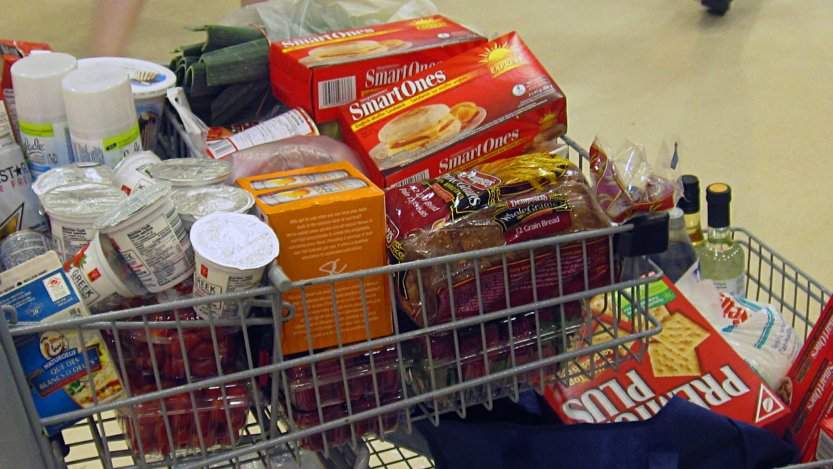You know that sage advice, “never go to the grocery store hungry?” There is actually research to support the statement. Studies have shown that your attention to food changes depending on whether you are hungry or satiated. So, it is probably not the best idea to schedule your grocery shopping right after work, before dinner, especially if you skipped lunch!
Most of the research out there has utilized eye tracking to assess attentional bias — a fancy way of saying that people show different preferences as to what they look at, or allot their attention to. Eyetracking is just as it sounds. Participants are shown a series of pictures and their pupil movement are tracked by a machine, as their gaze shifts from one item to the next. It can tell what they initially fixate on, how much time they spend looking at it and if they prefer to look at it over the other images on the screen.
In a given study, participants are shown four pictures, two may pertain to food, while the other two are neutral images of something like a car or a stapler. Researchers use the eye tracker to see if people show attentional bias towards the food by looking at it more and for longer than they look at the neutral images. Obviously, there are some drawbacks to an experiment like this. Perhaps the other image options are just not that interesting to look at. I know I would rather look at food than a desk or a chair. Unfortunately, short of following someone around a grocery store wearing a portable eye tracker, this is the best science has got. That being said, perhaps someone should develop a portable eye tracker!
In 2010, a group of researchers in the Netherlands compared attentional bias between overweight and normal-weight women under conditions of both hunger and satiety. Using the eye tracker, surprisingly, they found no difference in attention between any of the groups (Nijs, Muris, Euser & Franken, 2010). In other words, people displayed the same attention towards food-related images, regardless of hunger levels or weight. However, when looking at brain activity, the P300 brain wave was enhanced in normal weight participants under conditions of hunger. Their explanation for this is that normal weight people are able to focus their attention on the food, realize this and in doing so, stop themselves from consuming it. Either that or those in the overweight group intentionally try to avoid the food so that they do not think about it (Nijs et al., 2010). When they provided participants with a snack afterward, overweight and obese individuals not only ate more, there was also a significant difference in the amount they consumed when they were hungry compared to when they were satiated (Nijs et al., 2010).
Other research has produced slightly different findings. Another study by Castellanos et al. (2009) found that when hungry, both overweight and normal-weight groups show increased attention towards food-related images. However, the overweight participants maintained this attention even when they were full. It is thought that this sensitization to food cues may contribute to developing and/or maintaining obesity. Werthmann and colleagues furthered this research by identifying specific attention patterns in overweight compared to healthy weight participants. Despite initially directing their attention to images of food, overweight participants in the study then avoided these pictures for the duration of the viewing. As you can see, although overweight individuals show hypervigilance towards food cues, it is unclear whether this leads to prolonged attention or deliberate avoidance.
Although these finding have huge implications for helping people achieve and maintain a healthy weight, they are also related to the whole “don’t grocery shop when you are hungry” concept. We may not know exactly how hunger alters our attention but there is good evidence to show that you are more likely to fixate on food when your stomach is empty. So if you want to avoid coming home with everything but what was on your list to begin with, grab a snack before you go!
References
Castellanos, E., Charboneau, e., Dietrich, M., Park, S., Bradley, P., Mogg, K., & Cowan R. (2010). Obese adults have visual attention bias for food cue images: evidence for altered reward system function. International Journal of Obesity, 33, 1062- 1073.
Nijs, I., Muris, P., Euser, A., & Franken, I. (2009). Differences in attention to food and food intake between overweight/obese and normal-weight females under conditions of hunger and satiety. Appetite, 54, 243-254. doi:10.1016/j.appet.2009.11.004
Werthmann, J., Roefs, A., Nederkoorn, C., Mogg, K., Bradley, B., & Jansen, A. (2011). Can(not) take my eyes off it: attention bias for food in overweight participants. Health Psychology, 30(5), 561-569. doi: 10.1037/a0024291













